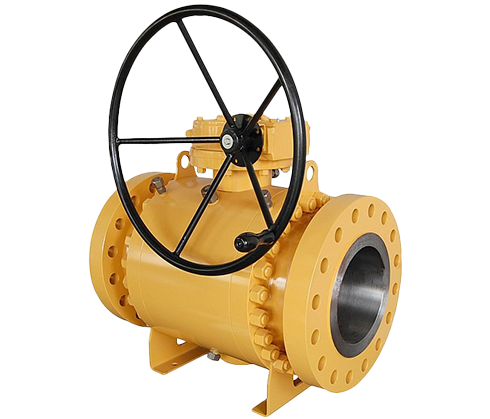2025-06-16
The Trunnion Mounted Ball Valve is a high-performance valve type engineered to handle high pressure, large diameter, and demanding service conditions. Unlike floating ball valves, the trunnion design features a fixed ball supported by bearings at both ends, which allows for lower operating torque and improved stability under varying pressures. For these valves to perform reliably over time, regular and preventive maintenance is essential.

Routine maintenance of a trunnion mounted ball valve begins with external inspection. This includes checking for leaks around the body seals, actuator connections, and flange areas. Visible signs of corrosion, mechanical damage, or vibration should be noted and addressed.
A critical part of valve maintenance is the seal integrity check. The seats and seals are subject to wear, especially in systems carrying abrasive or chemically aggressive media. Maintenance technicians should verify that seat sealing is intact and the valve shuts off fully under both upstream and downstream pressure conditions.
Actuator maintenance—whether pneumatic, electric, or hydraulic—is also necessary. This involves checking control signals, response timing, air or hydraulic pressure levels, and verifying that the valve operates within the designated torque range.
Lubrication of internal moving components, particularly the stem and trunnion bearings, is crucial to minimize wear and reduce operating torque. Specialized greases compatible with the media and temperature should be used.
In addition, periodic testing of emergency shut-off capabilities, particularly in safety-critical applications, is recommended. Documentation of all inspections and replacements helps support long-term traceability and compliance with industry standards.
By following these practices, operators can extend the operational life of the trunnion mounted ball valve, prevent costly shutdowns, and ensure safe fluid control under high-pressure conditions.
The All Welded Ball Valve is designed to offer sealing performance with minimal potential leak paths. With a body fully welded rather than bolted or flanged, this valve type is particularly suited for buried pipeline installations, gas distribution networks, and high-integrity systems where safety and reliability are paramount. Understanding the flow characteristics of all welded ball valves is essential for system engineers tasked with managing pressure losses, flow rates, and fluid behavior.
From a flow dynamics perspective, all welded ball valves are considered full bore valves, meaning that the internal diameter of the valve matches that of the connecting pipeline. This design minimizes pressure drop and allows for uninterrupted fluid flow with low turbulence. In gas transmission systems, for instance, this characteristic is important for reducing energy consumption by compressors and ensuring volumetric flow efficiency.
Another important flow-related feature is the streamlined flow path. Since the internal cavity of the valve is free from obstructions such as bolts or exposed sealing rings, the risk of debris accumulation is minimized. This makes all welded ball valves suitable for pigging operations, which involve cleaning or inspecting the pipeline interior with mechanical devices.
All welded ball valves also exhibit flow throttling stability within a limited range of open positions. While not typically used for throttling, their predictable pressure-flow behavior allows operators to perform controlled starts and stops without inducing water hammer or pressure surges, especially in long pipeline systems.
The valve's design includes pressure-balanced sealing, where the seats are designed to maintain tight contact with the ball regardless of flow direction or pressure fluctuations. This ensures bidirectional sealing performance without significant impact on flow rate.
Lastly, the thermal expansion characteristics of the all welded body contribute to consistent valve performance across temperature variations, helping maintain flow consistency and sealing integrity.